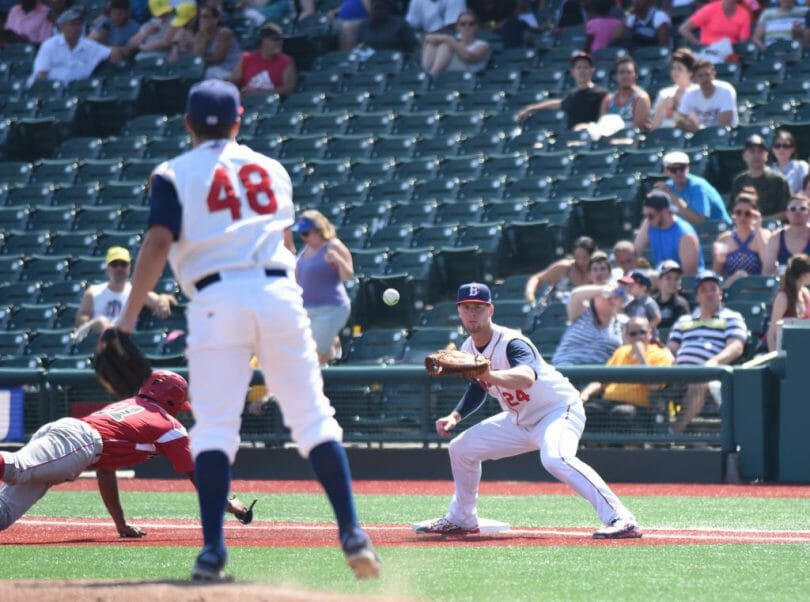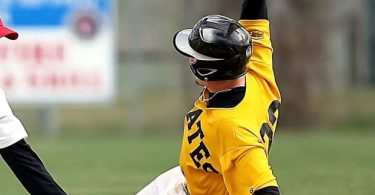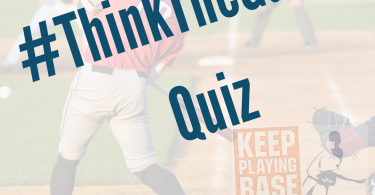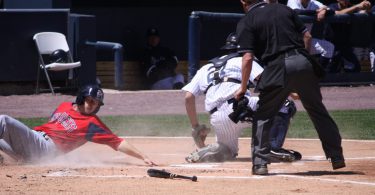The Situation: There is a runner on 1st and one out with the 8-hitter up. The batter has a 1-0 count. A righty is on the mound. He has yet to show much of a move over to 1st base and the coach has clocked his delivery to home plate to be around 1.4-1.45 seconds.
The Play: The runner on 1st , a third baseman with average speed, picks up the signs from his 3rd base coach—a hit-and-run is on! The pitcher comes set and holds. The runner at 1st starts to get antsy. The pitcher initiates his first movement, and the runner takes a step towards second before realizing that the righty has picked over to 1stbase.
The Outcome: The runner at 1st tries to scramble back, but knows he is doomed. Despite the throw being head height to 1st, the first baseman has plenty of time to slap the tag down and get the overly aggressive runner at 1st for the second out of the inning. The batter grounds out to end the inning.
What went wrong?
Does this situation sound familiar? Many young base runners feel a lot of pressure or get impatient when a hit-and-run is put on. In reality, you are not expected to steal the base, so most of the pressure should be felt by the hitter. To explain where the runner erred and why the mistake could be a costly one, let’s look at why coaches call a hit and run and what impact it has on run production.
A hit-and-run is put on as a calculated risk. Hit-and-runs are riskier than a sacrifice bunt (which wouldn’t make sense in this situation), but the potential rewards are much greater. There’s a lot that can go wrong—the batter could swing and miss, the pitch could be a poor pitch to hit, the opposing team could pitch out, and the list goes on— but the opportunity to open up holes for the hitter and have the runner in motion are benefits the coach feels are worth risking in this situation. One thing that should never happen is getting picked off. As a runner you should think of your goal on a hit-and-run as getting a head start rather than stealing the bag. The coach is betting that the batter can hit the ball on the ground or in the gap and does not expect you to steal the base outright, should the hitter fail at his task. If he expected the steal, he should put on a steal or a run and hit. For this reason, when a hit-and-run is put on, you should not be in a hurry to get the world’s best jump. You simply can’t get picked off, even with a balk move. While hit-and-runs are risky, the risk should come from what happens on the pitched ball and not on the runner getting picked-off. A look at run expectancy will help to explain why.
The hit and run in this situation is an effort to try to generate offense and at the very worst, the coach hopes to end up with a runner in scoring position with two outs. The difference between having a runner on first and one out and no one on and two outs is a run expectancy of approximately .4 runs, so it’s fair to say that on average the runner getting picked off costs his team .4 runs. Now let’s say that the runner doesn’t get picked off and the play results in a batter out and the runner only getting to second, the least desired outcome of the batter doing his job and putting the ball on the ground. That result of the hit and run play costs the team approximately .2 runs (-.2). Now let’s say a base hit leaves runners on the corner, a very desirable outcome for the batter putting the ball in play. In this case, the team has improved the run expectancy by approximately .65 runs. So in the coach’s strategy, he is risking -.2 runs for the potential benefit of +.65 runs (or maybe more with a ball in the gap or down the line). So to put the pickoff in perspective with run expectancy, it cost the team more than +1 expected run from the desired base hit outcome described. Clearly there is no guarantee that the batter would have gotten a base hit, but it’s a long-form way of explaining that the pickoff has the potential to be the difference in the game. So next time your coach gives you the hit and run sign, think the game. Knowing your responsibility just might win your team the game!







